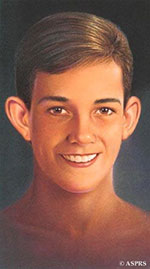Otoplasty (Ears)
Am I A Candidate?
Prominent ears or ears that appear to protrude can be surgically improved by setting them back closer to the head or reshaped.

How Is Surgery Performed?
There are many techniques employed, but an incision is commonly made near the fold on the back of the ear. The cartilage can be exposed, and thus sculpted. Sutures can be used to pin the ear back, as well as to reshape the ear and create folds. Cartilage can also be removed.
What Are The Risks?
Complications are rare and commonly minor. As with any surgical procedure where an incision is made through the skin, bleeding, infection, and scarring are potential complications. Infections are usually treated with antibiotics, and blood clots may require drainage. Your risk of complications can be minimized by following instructions that you will be given before and after surgery.
What Can I Expect?
The patient’s head and ears are wrapped in a bulky dressing immediately after surgery for compression. Pain medication is utilized to alleviate any aching or throbbing that may occur. After a few days, your bandage will be replaced by a headband for more comfort. Sutures are removed at one week. Most patients are able to return to work within a week after surgery.
How Long Do The Results Last?
On occasion, a stitch may loosen and the procedure may need to be repeated. Fortunately, the results of your surgery are usually permanent. There is usually some asymmetry between the two ears, as no two ears are naturally mirror images of one another. These differences are usually subtle. The goal is realistically improvement, not perfection.
